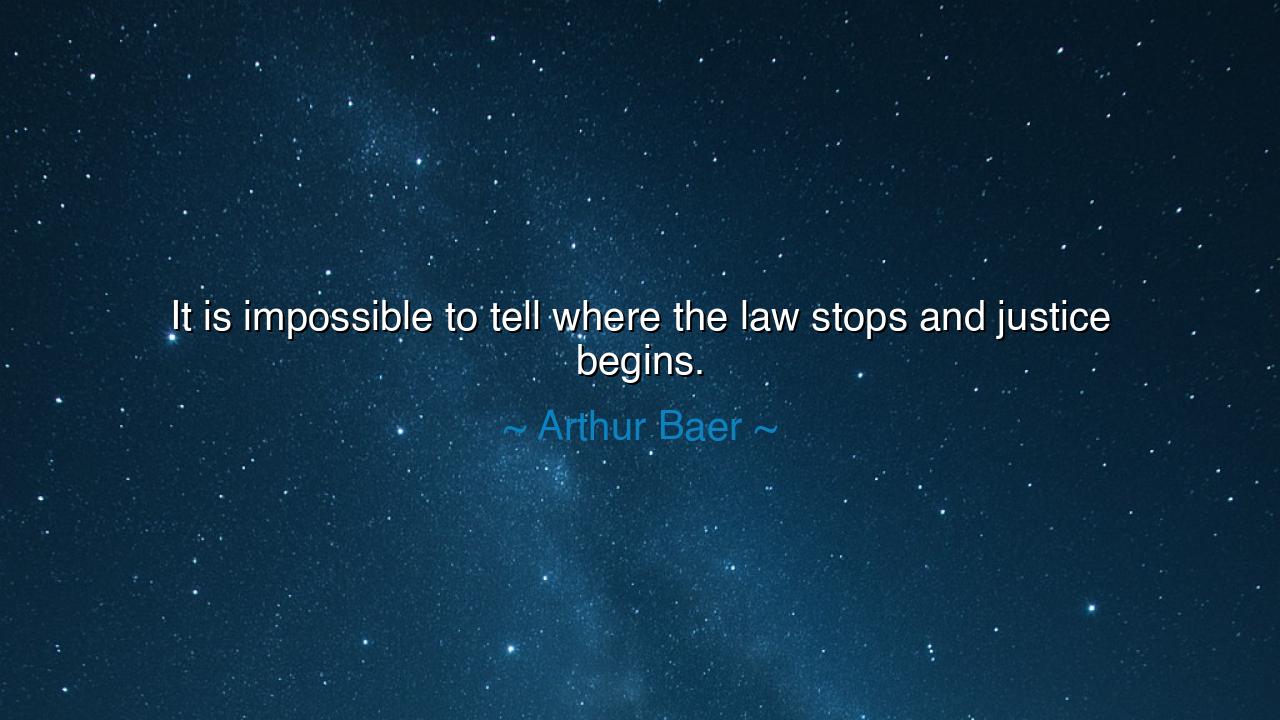
It is impossible to tell where the law stops and justice begins.






Hear, O seeker of truth, the words of Arthur Baer, who once declared: “It is impossible to tell where the law stops and justice begins.” This utterance, at once simple and profound, is not the speech of a lawyer bound in parchment, but the cry of a mind that grasped the mystery of human order. For in these words we are reminded that law and justice, though kin, are not the same. They walk side by side, entwined like twin rivers, but their waters are not always clear, nor their courses always straight.
The meaning of this teaching lies in the eternal struggle between what is written and what is right. The law is a human creation, carved into codes, statutes, and decrees. It is meant to guide, to restrain, to order society. Yet justice is older than any law, older than kings, older than nations—it is the eternal principle that dwells in the heart of humankind, the voice that whispers when the law is silent, and that protests when the law is cruel. Baer’s words teach us that the boundary between the two is veiled: sometimes law serves justice, sometimes it betrays it, and oftentimes it is impossible to know where one ends and the other begins.
Consider the tale of Antigone, daughter of Oedipus, as sung by Sophocles. The law of the city, proclaimed by King Creon, forbade her from burying her brother, deemed a traitor. Yet Antigone defied the law, for she believed in a higher justice, one written not in decrees but in the will of the gods and the bonds of kinship. She was condemned, yet her story echoes across the ages. Here we see Baer’s truth: was Antigone wrong to break the law, or was Creon wrong to uphold it? Where did law end, and where did justice begin? None could say with certainty, for the line between them was blurred in tragedy.
So too in the history of America. Recall the days of segregation, when laws declared that men and women of different colors must drink from separate fountains, sit in separate schools, live in separate worlds. The law was clear, but was it justice? No. It was a mockery of justice, an insult to human dignity. Yet in those days many clung to the law as though it were righteousness itself. Only when voices rose—voices like Rosa Parks and Martin Luther King Jr.—did the people remember that justice is older, greater, and higher than statutes written by the hands of men.
Mark well, O listener, that Baer does not mock the law, but warns against confusing it with justice itself. For the law is a tool, but justice is the purpose. The law is the lamp, but justice is the flame. If we mistake the lamp for the flame, we risk living in darkness even as we hold the lamp aloft. Thus his words call us to vigilance: to look beyond the letter of the law and ask, always, whether it serves the spirit of justice.
Let this be the lesson: obey the law, but do not worship it. Question it when it falters, challenge it when it oppresses, and change it when it strays from justice. For the law was made for man, not man for the law. To live blindly by statutes is to be a slave; to live by justice is to be truly free.
Therefore, O child of tomorrow, walk wisely in the world. Respect the law, for without it there is chaos; but pursue justice, for without it there is tyranny. And when the two diverge, have the courage of Antigone, the resolve of Rosa Parks, the vision of every soul who saw that law without justice is hollow. In this way, you shall honor Baer’s teaching, and become not merely a servant of the law, but a guardian of justice itself.






AAdministratorAdministrator
Welcome, honored guests. Please leave a comment, we will respond soon